Oil ( ρ=925kg/m3) is flowing through a pipeline at a constant speed when it encounters a vertical bend in the pipe raising it 4.0 m. The cross-sectional area of the pipe does not change . What is the difference in pressure (pB−pA) in the portions of the pipe before and after the rise ?
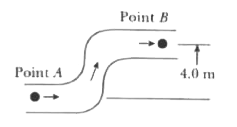
+2.4×104 Pa
−7.2×105 Pa
−3.6×104Pa
−1.8×103 Pa
The correct Answer is:C
Step by step video, text & image solution for Oil ( rho = 925 kg //m^(3)) is flowing through a pipeline at a constant speed when it encounters a vertical bend in the pipe raising it 4.0 m. The cross-sectional area of the pipe does not change . What is the difference in pressure (p_(B) - p_(A)) in the portions of the pipe before and after the rise ? by Physics experts to help you in doubts & scoring excellent marks in Class 12 exams.
Topper's Solved these Questions
- BOOK - RESNICK AND HALLIDAYCHAPTER - FLUIDSEXERCISE - PRACTICE QUESTIONS (More than One Correct Choice Type )10videos
FLUIDS
- BOOK - RESNICK AND HALLIDAYCHAPTER - FLUIDSEXERCISE - PRACTICE QUESTIONS (Linked Comprehension )9videos
FLUIDS
- BOOK - RESNICK AND HALLIDAYCHAPTER - FLUIDSEXERCISE - PROBLEMS68videos
FLUIDS
- BOOK - RESNICK AND HALLIDAYCHAPTER - ELECTROMAGNETIC WAVES EXERCISE - PRACTICE QUESTIONS (Integer Type)3videos
ELECTROMAGNETIC WAVES
- BOOK - RESNICK AND HALLIDAYCHAPTER - FORCE AND MOTION - I EXERCISE - PRACTICE QUESTIONS (Integer Type)3videos
FORCE AND MOTION - I
Similar Questions
A venturi meter is used to measure the flow speed of a fluid in a pipe . The meter is connected between two sections of the pipe (Fig) the cross-sectional area A of the entrance and exit of the meter matches the pipe's cross-sectional area a with speed v . A manometer connects the wider portion of the meter to the narrower portion . The change in the fluid's speed is accompanied by a change Δp in the fluid 's pressure , which causes a height difference h of the liquid in the two arms of the manometer. (Here , Δp means pressure in the throat minus pressure in the pipe).
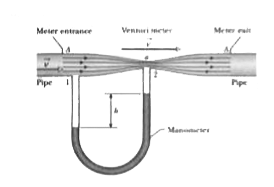
Suppose that the fluid is fresh water , that the cross-sectional areas are 64cm2 in the pipe and 32cm2 in the throat , and that the pressure is 55 kPa in the pipe and 41 kPa in the throat , and that the pressure is 55 kPa in the pipe and 41 kPa in the throat . What is the rate of water flow in cubic meters per second ?View SolutionA venturi meter is used to measure the flow speed of a fluid in a pipe . The meter is connected between two sections of the pipe (Fig) the cross-sectional area A of the entrance and exit of the meter matches the pipe's cross-sectional area a with speed v . A manometer connects the wider portion of the meter to the narrower portion . The change in the fluid's speed is accompanied by a change Δp in the fluid 's pressure , which causes a height difference h of the liquid in the two arms of the manometer. (Here , Δp means pressure in the throat minus pressure in the pipe).

(a) By applying Bernoulli's equation and the equation of continuity to points 1 and 2 in Fig show that
V=√2a2Δpρ(a2−A2)
where r is the density of the fluid .View Solution
Knowledge Check
- Question 1 - Select One
Air is blown through a pipe AB at a rate of 15 litres per minute. The cross sectional area of the broad portion of the pipe AB is 2cm2 and that of the narrow portion is 0.5cm2. The difference in water level h is (ρair=1.32kg/m3)
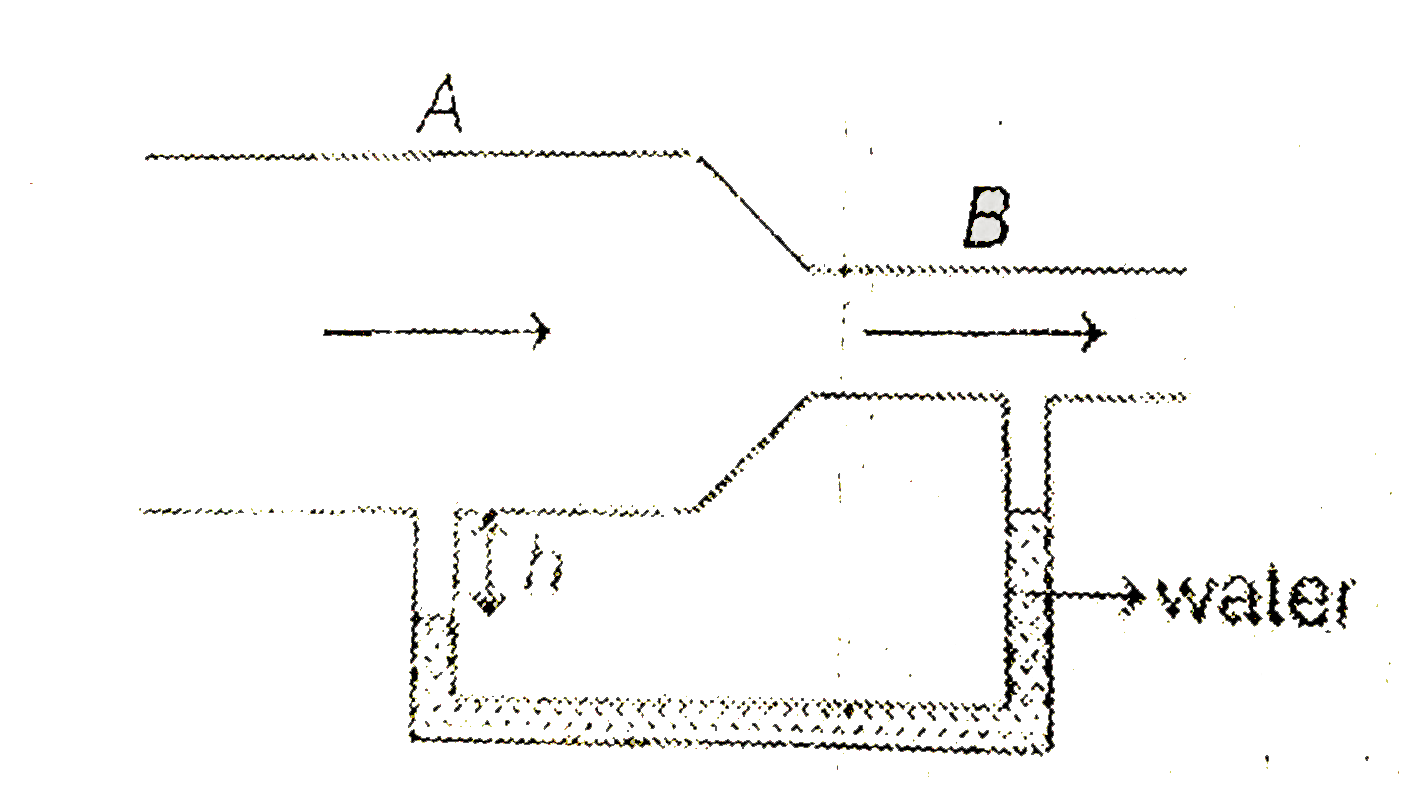 A5.26mmB1.54mmC4.38mmD3.26mm
A5.26mmB1.54mmC4.38mmD3.26mm - Question 2 - Select One
Water flows through a pipe of diameter 8.0 cm with a speed of 10.0 m/s . It then enters a smaller pipe of diameter 3.0 cm . What is the speed of the water as it flows through the smaller pipe ?
A1.4 m/sB71 m/sC2.8 m/sD54 m/s - Question 3 - Select One
Air is blown through a pipe AB at a rate of 10Lmin−1. The cross-sectional area of the broad portion of the pipe AB is 2cm2 and that of the narrow portion is 0.5cm2. The difference in water level h is (density of air =1.32kgm−3)
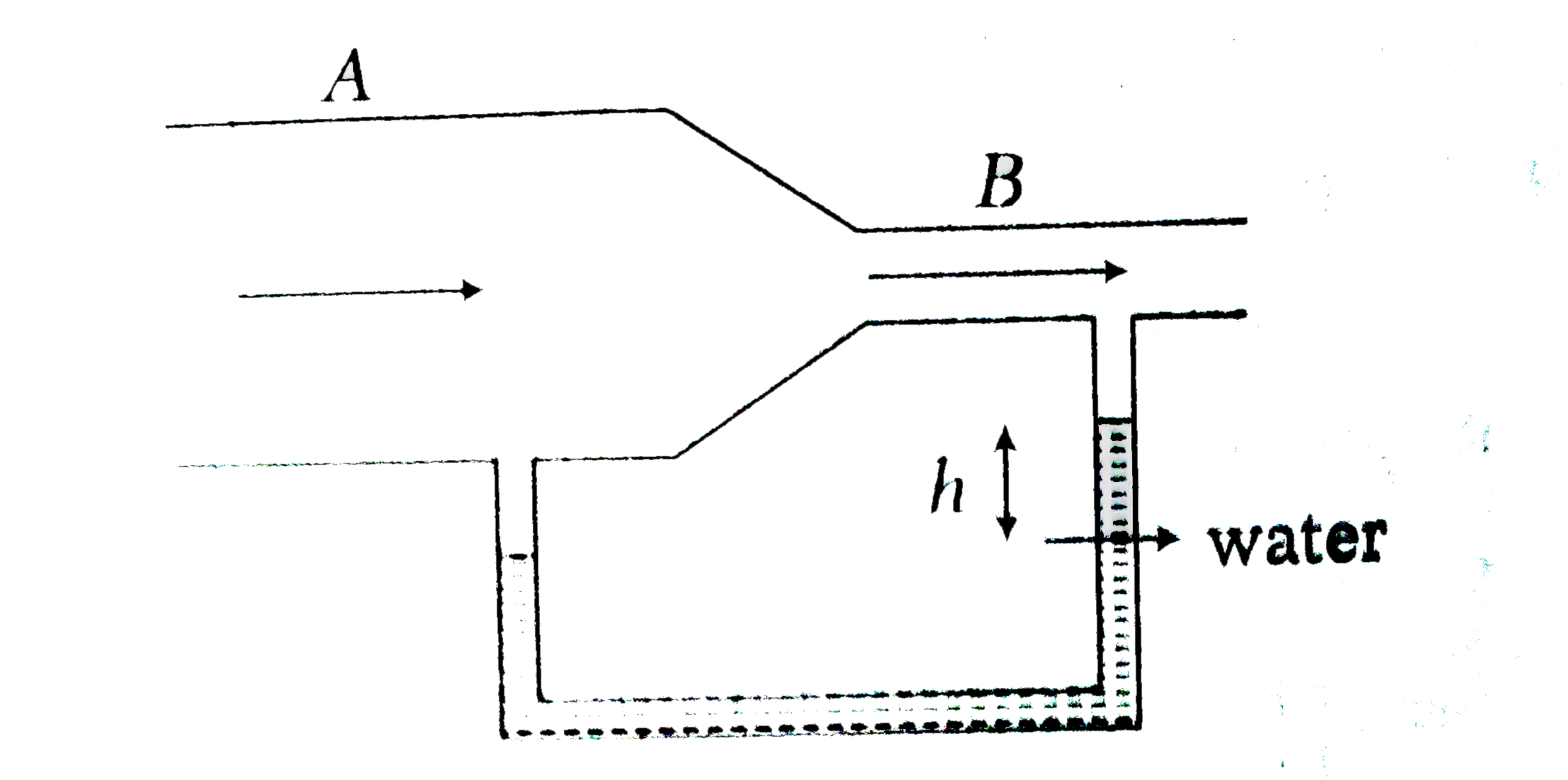 A16 mmB1.5 mmC10 mmD3.2mm
A16 mmB1.5 mmC10 mmD3.2mm
A Pitot tube (figure) is mounted along the axis of a gas pipeline whose cross-sectional area is equal to S. Assuming the viscosity to be negligible, find the volume of gas flowing across the section of the pipe per unit time, if the difference in the liquid columns is equal to Δh, and the densities of the liquid and the gas are ρ0 and ρ respectively.
 View Solution
View SolutionA piot tube figure is mounted along the axis of a gas pipeline whose cross -sectional area is equal to S.
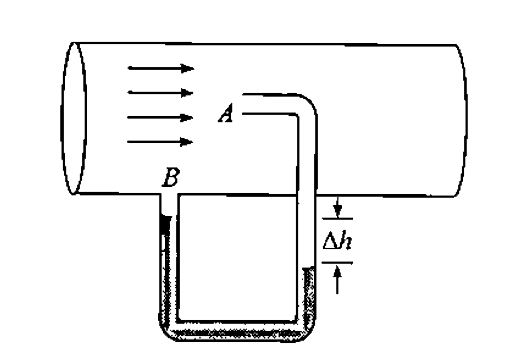
Assuming the viscosity to be negligible, find the volume of the gas flowing across the section of the pipe per unit time, if the difference in the liquid columns is equal to Δh, and the densities of the liquids and the gas are ρ0 and ρ respectively.View SolutionA liquid of density ρ is flowing with a speed v through a pipe of cross sectional area A. The pipe is bent in the shape of a right angles as shown. What force should be exerted on the pipe at the corner to keep it fixed?
 View Solution
View SolutionA rectangular sump has an inner length and breadth of 24 m and 20 m respectively. Water flows through an inlet pipe at 180 m per minute. The cross-sectional area of the pipe is 0.5 m2. The tank takes half an hour to get filled. Find the depth of the sump (in m).
View SolutionThere is a stream line flow of water in a horizontal pipeline ofnon-unifon11 cross-section . The velocities of water at two points. A and B in the pipe are 1 m/s and 2 m/s. The pressure at A is 2000 pascal. What is the pressure at B ?
View Solution

